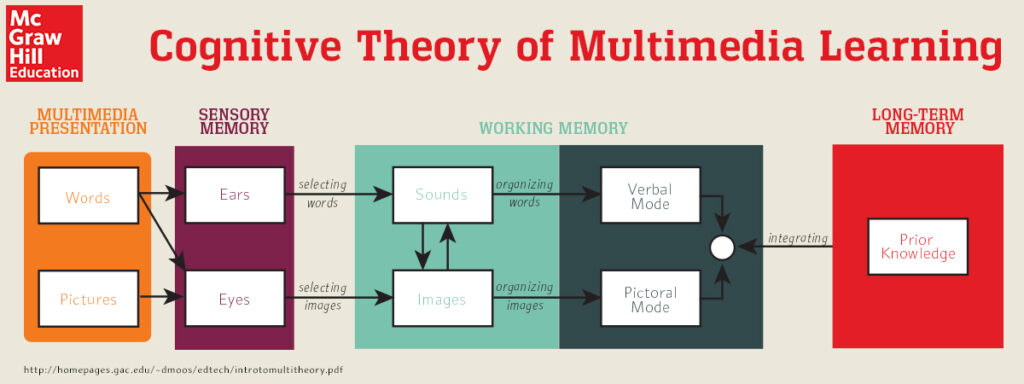Multimedia in Learning
Multimedia is various media (video, audio, pictures, games, etc.). The topic of multimedia learning encompasses the combination of various modes of media to deliver a better learning experience. Kevin Alexanders’ podcast covers the effectiveness of multimedia and how we can utilize it for our benefit and the benefit of others, primarily our students. Using non-verbal and verbal modes of intaking information expands our capabilities to understand and learn effectively. However, it is also important to note that overloading these channels can result in what is called an increase in intrinsic cognitive load. Effectively preventing a build-up will require principles which contribute to managing intrinsic load.

Managing Cognitive Load
The management of intrinsic load is adamant when learning as it is identified as the level of difficulty when learning for a learner. To learn effectively, it is essential to have a balance of intrinsic load to increase the value each time we learn. The three principles effective in preventing cognitive load are as follows:
Segmenting
The segmenting principle is an effective method in multimedia learning as it presents a learning pace that suits the learner rather than a continuous unit. Segmenting can be especially effective for learners who are not fast-paced and prefer to take information in slowly (Mayer, 2009). Segmenting allows for effective analysis when learning material as it breaks concepts down thoroughly.
Pretraining
The pretraining principle uses terminology the learner is familiar with to apply a more profound sense of learning. Pretraining is seen to be effective in narrated animations as it visualizes and familiarizes the learner with where certain parts are. Pretraining effectively allows learners to visualize and construct what they are learning.
Modality
The modality principle is the power of narration for a particular object rather than words printed under an associated object. This principle effectively offloads intrinsic load as there are two channels of learning intake. Modality allows for processing in auditory channels and visual channels.
Reflection
When I listened to the Soundcloud podcast by Alex, I felt more focused as the slow pace was easier to follow. When reading articles and other material, I tend to read too fast and lose track of what I am reading. In contrast, one clear auditory channel with a slow pace minimizes the overload of the auditory channel.
References
Mayer, R. (2009). Modality Principle. In Multimedia Learning (pp. 200-220). Cambridge: Cambridge University Press. doi:10.1017/CBO9780511811678.015
Hi Max,
In your post, you included some incredibly crucial information. For instance, the significance of expanding our comprehension through the use of both verbal and nonverbal modes, while being careful not to overload since this may raise intrinsic cognitive load.
One of the principles that I particularly enjoyed is segmenting since it lets me learn at my own pace. I frequently pause to gather additional information in order to better comprehend. Additionally, I can take notes without fear of missing anything.
You brought up a critical point about reading articles in your reflection. Most individuals read too quickly and potentially lose track of or focusing on what they are reading, but listening makes it simpler to concentrate and comprehend.